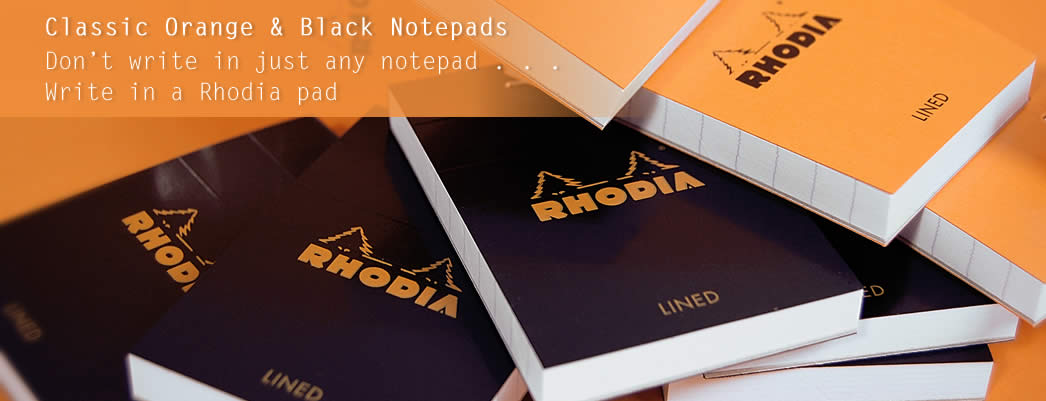
Rhodia pads are world-renowned for their high quality, precise standards, and timeless design. The Rhodia line of notepads and notebooks are a favorite amongst architects, professionals, designers, and scientists. The ease of writing on Rhodia paper is second to none, due to its smooth vellum surface plus ideal paper weight. With unmatched quality, durable construction and supreme paper, you can feel superior confidence in your notepad of choice: the Rhodia Notepad. It is no surprise that the Rhodia classic notepad, made in France, has a major international cult following.
The economical Rhodia pads are a favorite of artists & designers, writers and people who like to use paper for notes, writing, sketching, doodling, hand drafting and more. People love them for their premium paper, quality construction, diverse selection and iconic cover. Rhodia notepads have a Number ( “No.” ) to denote their size.
Rhodia originated as part of a family business known as Verilhac Brothers Paper-Maker in the early 1900’s, and toward the end of the 1900’s it joined with Clairefontaine (also a multi-generational family business). After the acquisition, the Rhodia brand remains true to its roots, and in fact some Rhodia family members stayed on with the brand. The joining of these two legendary brands, only made both better.
Rhodia was founded in 1932 by the brothers Henri and Robert Verilhac, who founded the Verilhac Paper Mills in the French Alps. The name was inspired by the Rhone River - legend has it that the two Rhodia fir trees of the logo symbolize the two founding brothers. The famous orange Rhodia cover dates back to the 1930s - it was a standard hue for cardstock at the time and remains unchanged to this day. Over time, Rhodia has become the most popular pad in France.
Rhodia was purchased in 1997 by the historic Clairefontaine company, located in the Vosges region of France. This was a match made in heaven. A paper-making legend itself, Clairefontaine was established in 1863 on the site of a 16th century paper mill and continues to this day. In fact, it's currently the only manufacturer making its own paper for its own products. This guarantees not only consistent product quality, but also controls the environmental impact of the manufacturing process. Clairefontaine only buys pulp from sustainable forests that are certified according to recognized international standards (PEFC, FSC, etc.). The river Meurthe is the source of water supply for the Vosges mill - the water is so clean when it leaves their facility that local people can swim within sight of it.
Didier Verilhac, a descendant of one of the founders and a current employee of Rhodia/ Clairefontaine, described Rhodia's origin: "Around 1880, Samuel and Jean-Abel Verilhac lived in Lyon and were wholesale merchants for printing paper. At that time there was no direct distribution system between the manufacturer and the printers. The company sold its product in the south of France as well as the French colonies of North Africa." "Jean-Abel had three sons; the oldest son died in World War II, the second and third sons created the company Verilhac Brothers, Paper-Maker in 1932 in Lyon. They started with 50 workers manufacturing various paper products. One brother had studied engineering, the other was very good in marketing. Together, they made a powerful duo. In 1934 they purchased an abandoned arms manufacturing plant and moved production from Lyon to Grenoble." "The first Rhodia pad was made in 1934 in Lyon. In Lyon there is the Rhône river. People born in this region are called Rhodaniens. The name came from there. The two trees in the logo represent the two brothers, these trees are epiceas (spruce). If you take a look at them, these trees are not identical. They are linked by a line to show that the brothers work together. The brand and the logo were designed by Marie-Antonia, the wife of one of the Verilhac brothers." The family story goes that Marie-Antonia drew the logo sitting at the kitchen table.
In 1934 the company moved from Lyon to Sechilienne near Grenoble in the French alps. The company was purchased by Clairefontaine in 1997 and production transferred to Mulhouse, in Alsace, France. Rhodia pads are manufactured exclusively on Machine No.6.